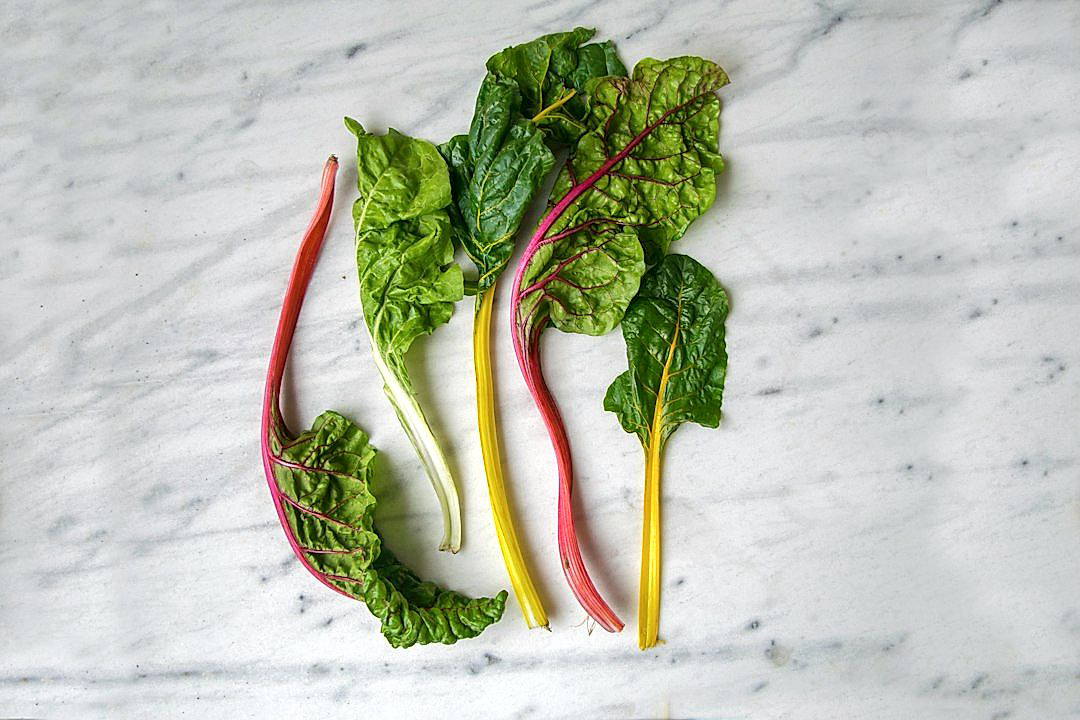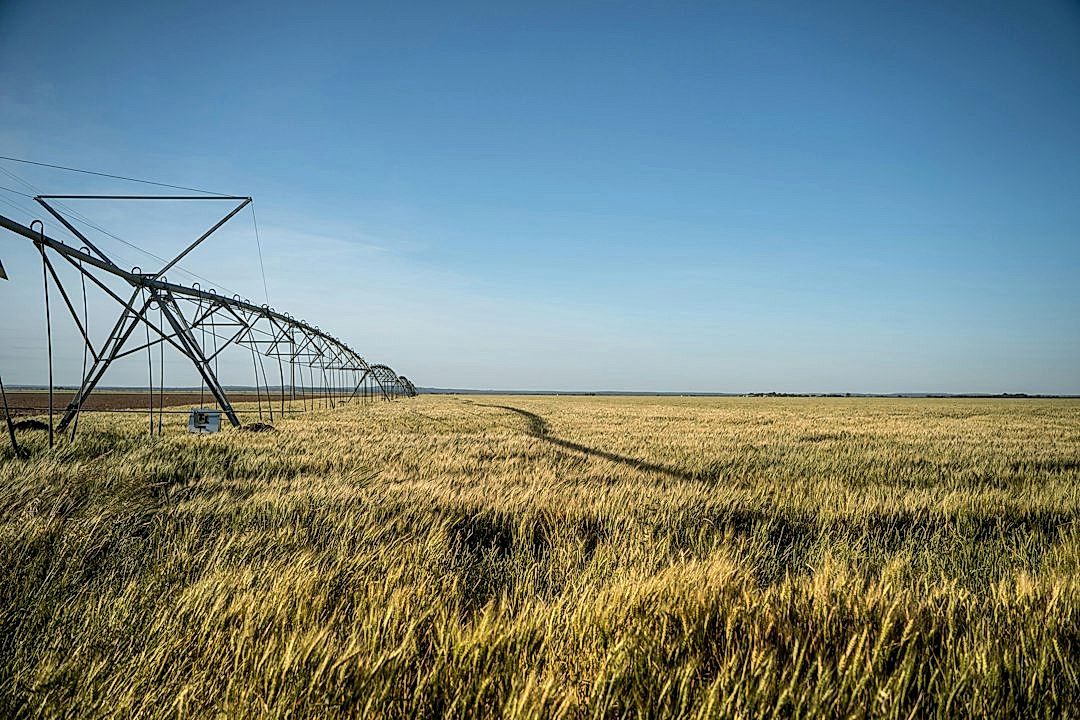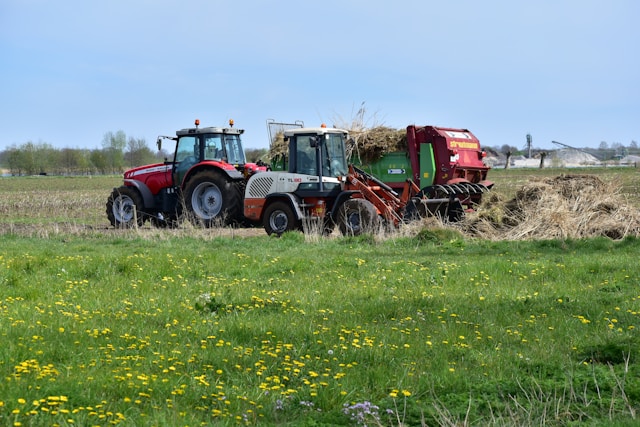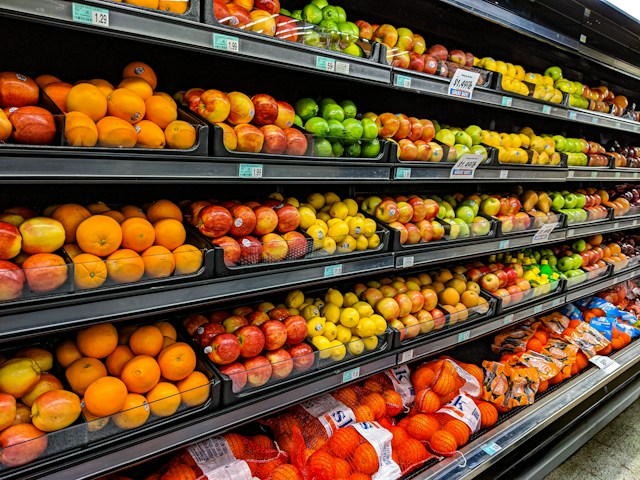The global food system continually battles with wastage, particularly in the farming sector where valuable organic matter is often discarded.
Many farms face hurdles in dealing with surplus or blemished produce, while at the same time, the opportunity for the circular economy in agriculture remains largely untapped.
In this context, prioritizing mechanisms for dealing with organic waste is crucial.
By employing various strategies such as composting or energy regeneration, farms can transform waste from a problem to an asset.
This contributes to a more sustainable food system, aids in soil fertility and can even create valuable by-products.
In this blog, we aim to explore practical and innovative solutions that equip farms to deal more effectively and profitably with organic waste.
Organic Waste Solutions For Produce Farms
1. Composting Leftover Crops and Plant Debris
One of the most effective ways to manage organic waste on a farm is through the process of composting.
This method transforms the leftover crops and plant debris from your farm into valuable organic matter that enhances the fertility and structure of the soil.
Composting works by encouraging the natural decay process, where microorganisms break down organic material into a nutrient-rich soil conditioner.
When composting, it is essential to include a mix of brown and green materials for balanced compost nutrition.
Brown materials can include twigs, branches, dried leaves, and straw, providing carbon, while green materials like vegetable scraps or lawn clippings add nitrogen, both essential for composting.
The process of composting not only provides a natural solution to dispose of organic waste, but it also improves soil health, making your farm highly productive.
By improving the soil structure, composting helps with water retention, aeration, and disease suppression, which are vital for healthy plant growth.
Moreover, composting reduces the dependency on chemical fertilizers, leading to an overall reduction in farming costs.
Practicing composting on your farm can also contribute to mitigating climate change by capturing and storing carbon in the soil.
In addition to the environmental and agronomical benefits, composting can uplift the economy of your farm by creating a value-added product for sale.
Turning organic waste into compost can help farms generate additional income from selling the compost to local gardeners, landscapers, and organic farming enthusiasts.
However, making good compost requires knowledge and technique.
It’s about balancing the right ratio of carbon to nitrogen, sufficient moisture, and adequate aeration, all of which are necessary for effective composting.
Regular turning or stirring of the compost pile can accelerate the decomposition process and prevent it from producing unpleasant odors.
Controlling the temperature is also crucial to kill weed seeds and pathogens that could be harmful to your crops.
With accurate understanding and application, composting offers a win-win solution for organic waste management on produce farms.
In summary, composting leftover crops and plant debris is a sustainable and cost-effective way for organic waste management on farms that also contributes to better soil health, increased farm productivity, and additional income generation.
2. Anaerobic Digestion for Biogas Production
Anaerobic digestion is a biological process that happens naturally when bacteria break down organic material in environments with little or no oxygen.
The process of anaerobic digestion involves four key stages; hydrolysis, acidogenesis, acetogenesis and methanogenesis, which together convert organic waste into valuable biogas.
This process is effectively used in organic farms to manage waste, as it provides a sustainable solution for the disposal of crop residue and other farm waste.
Anaerobic digestion on a farm involves the collection and storage of organic waste in a specialized tank known as a digester.
The digester is a sealed unit, ensuring that oxygen is excluded from the process, which is necessary for the anaerobic bacteria to thrive and break down the organic waste.
The produced biogas, which is primarily methane, can then be used as a source of renewable energy to power farm operations, providing a further benefit to the farm’s sustainability credentials.
Electricity or heat generated from biogas can be used directly within the farm operations, reducing the reliance on non-renewable energy sources.
Moreover, the process of anaerobic digestion also leaves behind a byproduct known as digestate.
This digestate is a nutrient-rich substance that can be utilized as a high-quality fertilizer, contributing to soil health and crop nutrition.
Through the process of anaerobic digestion, farms are not only dealing with their waste in a sustainable manner, but they are also generating useful end products that can support their operations.
Implementation of anaerobic digestion systems can require significant initial investment, and it’s crucial for farms to undertake thorough feasibility studies to ensure the economic viability for individual farms.
Factors such as the availability and nature of organic waste, size of the farm, existing waste management practices, and available infrastructure are all elements to be considered in the decision-making process before implementing an anaerobic digestion system.
However, with supportive policies and incentives, anaerobic digestion can become a viable and profitable waste solution for many organic farms.
By combining waste management, renewable energy production, and organic fertilizer creation, anaerobic digestion embodies the ideals of the circular economy on a farm scale.
Therefore, anaerobic digestion for biogas production is not just a solution to the problem of organic waste in produce farms; it’s a way of turning that problem into a set of solutions that benefit the entire farm ecosystem.
3. Creation of Organic Fertilizers from Waste
One effective solution that offers both waste reduction and soil nourishment is the creation of organic fertilizers from waste.
A farm’s waste can be turned into valuable organic fertilizer, thereby returning valuable nutrients to the soil.
This process does not only reduce the waste but also contributes to the improvement of soil health and productivity.
The practice of converting waste to organic fertilizer also avoids the use of synthetic fertilizers that could potentially harm the environment.
It is an economical and environmentally friendly solution that reduces the farm’s ecological footprint while enhancing crop yield.
The production of organic fertilizer from waste not only addresses the waste management issues but also contributes to sustainable farming practices.
There are various methods to convert waste into organic fertilizer, which include composting, vermicomposting, and anaerobic digestion.
These methods vary in terms of the kind of waste they can handle, the time they take, and the quality of the organic fertilizer produced.
Composting is a process where waste is allowed to decompose naturally in a controlled environment.
The end product, called compost, is rich in nutrients and can be used as a soil conditioner.
Vermicomposting, on the other hand, involves the use of worms to speed up the decomposition process.
The waste is converted into a nutrient-rich substance called vermicast, which is an excellent soil additive.
Anaerobic digestion is a more complex process that involves breaking down organic material in the absence of oxygen to produce a biodegradable fertilizer.
This method also generates a byproduct called biogas, an alternative source of energy that can be used to power farm operations.
While these methods may require investment in time and resources, the payoff in terms of waste reduction and improvement in crop yield can be significant.
4. Feeding Waste to Farm Animals
One of the effective ways to manage organic waste in produce farms is through feeding waste to farm animals. This method not only helps in managing organic waste but also contributes to farm sustainability.
Not every part of a grown plant is suitable for human consumption but that doesn’t mean it’s not useful on a farm setting.
Parts of the crop that are not marketable for sale, yet remain nutritious for animals, like leaves, stems, and peels, are good for livestock feeding.
The practice of feeding organic farm waste to animals contributes to a sustainable farming system by closing nutrient cycles, reducing waste management costs, and lowering the farm’s reliance on commercial animal feeds.
It’s an excellent waste management solution that is also economically beneficial.
Animal feeding has the added advantage of reducing feed costs.
By feeding the animals with crop residues and waste from the farm, farmers can significantly save on the cost of commercial feeds.
Plus, these waste feed are often rich in fiber and other nutrients, maintaining the health and productivity of the animals.
There’s need to ensure that the waste feed does not contain harmful substances, like pesticides, that may affect the animals’ health and the safety of their products for human consumption.
The involvement of a veterinarian or an animal nutritionist is advisable to ensure that the waste feed is safe and nutritionally adequate for the animals.
Overall, when properly managed, farm waste feeding can provide multiple economic, environmental, and social benefits for the produce farms.
It greatly contributes to the reduction of waste on the farm, while providing a cheap feed alternative for the livestock.
Furthermore, it promotes farm self-sufficiency, reduces the reliance on external inputs, and contributes to the sustainability of the farming system.
Feeding waste to farm animals is therefore a great solution for organic waste in produce farms, worthy of consideration and implementation by farmers.
Indeed, with careful management and implementation, it can greatly improve the efficiency and sustainability of organic waste use on produce farms.
In the end, this will contribute to sustainable agriculture and food security by making produce farms more efficient and reducing their environmental footprint.
5. Producing silage from crop residue.
Producing silage from crop residue is a traditional practice in farming that has proven to be an effective method for managing organic waste on produce farms.
It involves the fermentation of crop residue like leaves, stalks, and stems that remain after the crops have been harvested.
It is achieved by storing the crop residue in an environment devoid of oxygen, resulting in the preservation of the nutrients in the crop residue.
The resultant silage serves as a rich source of animal feed for cattle, sheep, and other livestock during periods of scarcity like the winter months or dry seasons.
By adopting this practice, farmers can beneficially use their crop residue, which would have otherwise been wasted.
This process also reduces the need for farmers to purchase expensive and possibly chemical-laden commercial animal feeds.
It promotes a circular economy by converting what would have been waste into a valuable feed resource, hence reducing the farmer’s farm expenses.
Apart from being cost-effective, this practice is also eco-friendly as it reduces the dependance on commercial feeds that often require deforestation for their production.
Furthermore, it reduces methane emissions that would have been released if the crop residue was left to decompose on the field.
It has been established that methane is a much more potent greenhouse gas than carbon dioxide, which implies that silage production aid in combating climate change.
The quality of silage can be greatly enhanced by chopping the plant debris into small pieces before ensiling, which hastens the fermentation process.
The finished silage should ideally have a pleasant aroma and a greenish-brown color.
The quality of silage can be a determining factor in its acceptance by the livestock, and consequently, its effectiveness at reducing farm waste.
It’s important to note that not all types of crop residue are suitable for silage production; thorough research and possibly consultation with a livestock extension officer can enable farmers to make an informed decision on this.
Poor handling or inappropriate storage of the silage can result in loss of quality or even total waste.
It is therefore essential that farmers learn and adopt the right silage production and storage techniques to make the most of their crop residue.
6. Donation or Sale of Unsold Produce
One of the critical strategies for organic waste management on produce farms is the donation or sale of unsold produce.
This initiative not only reduces waste but also contributes to food security by providing wholesome food to those in need.
Unsold produce often ends up in landfills, contributing to methane gas emissions, one of the main drivers of climate change.
By donating or reselling this food, farms can reduce the negative environmental impacts associated with organic waste decomposition.
Donation of unsold produce is a win-win situation, minimizing waste while addressing issues of food insecurity and climate change.
There are numerous organizations, food banks, and charities that welcome donations of unsold produce.
Reselling unsold produce, maybe at a discounted rate, is also a viable option.
This approach can partly recover production costs and cut waste.
Several discounted food programs around the world buy unsold produce to sell at lower prices to those in need.
It’s crucial for each farm to establish connections with local food banks, charities, or discounted food programs to facilitate this process.
Reselling or donating unsold produce is also a way for farms to create positive relationships with local communities.
Farms can also benefit by receiving tax deductions for charitable donations in some jurisdictions.
Despite the numerous advantages, there are some challenges associated with this method, such as coordination, transportation costs, and ensuring the quality of the donated produce.
However, these challenges can be overcome with good planning and partnerships with organizations that specialize in food recovery and distribution.
Freshness monitoring technologies can also be used to ensure that the donated or resold produce is still of good quality.
In essence, the donation or sale of unsold produce is a practical and beneficial waste reduction strategy that produce farms should consider adopting.
7. Implement crop rotation to reduce waste
Crop rotation is an age-old farming practice that can be used as a strategy to manage organic waste on produce farms.
This technique involves alternating the types of crops grown in a particular field from year to year, which helps improve soil health and fertility.
By using crop rotation, farmers can significantly reduce the amount of organic waste they generate from year to year.
Implementation of this method not only deals with waste management but also increases the soil’s fertility.
Crop rotation helps to reduce organic waste by breaking pest and disease cycles that may make crops unmarketsellable and lead to waste.
The diversification of crops through rotation can increase the biological activity of the soil, which breaks down organic material more rapidly and reduces waste buildup.
Additionally, crop rotation can also improve yield as the soil is enriched with nutrients which previously would have been lost to waste.
This holistic technique works well as part of an organic waste management strategy on produce farms, as it reduces the requirement for synthetic fertilizers and can help improve biodiversity.
Furthermore, crop rotation can lead to healthier and more resilient crops that are less prone to disease and pest damage, thereby reducing waste.
Crop rotation also allows farmers to recover organic residues such as roots and stubble that improve the soil structure to reduce soil and water erosion, which indirectly contributes to waste reduction.
Considering all aspects, crop rotation is an efficient, sustainable and cost-effective method of managing organic waste and at the same time improving the soil fertility and combating pests naturally.
If done properly, crop rotation can be a natural form of waste reduction which in turn contributes to the circular economy concept with waste being used as a resource.
Crop rotation requires strategic planning to manage organic waste effectively, taking into account the characteristics of each crop and its suitability to the soil type and climate of the farm.
Although there may be initial challenges in implementing a crop rotation strategy, with careful management and ongoing monitoring, it can become a cornerstone of any organic farm’s long-term waste management and sustainability strategy.
The Bottom Line
Agricultural waste, often viewed as an overlooked issue, presents multiple opportunities for value creation and resource conservation when managed effectively.
Techniques such as composting, anaerobic digestion, and the creation of organic fertilizers not only reduce waste but also enhance soil fertility and produce renewable energy.
Similarly, incorporating food waste into animal diets, producing silage, and diverting surplus produce to local communities offers avenues to minimize losses and further extend the value chain of food production.
Additionally, the practice of crop rotation can enhance land conservation while cutting down on waste.
Through these strategies, we enforce the notion that agricultural waste is not purely a problem, but a resource to be wisely utilized.




